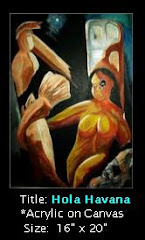Christmas and Holiday themed radio shows were very popular during the 1930s and 1940s, and so it comes as no surprise that Television carried forth that tradition when it came into its own.
Just about every TV series had a Christmas episode each year. Some shows repeated the same show (or a variation of it), while others managed to do a new Christmas show every year.
The Jack Benny Show, each year, had Jack out trying to buy the cheapest gifts he could for his staff, driving the store clerk to the brink of madness. While everyone knew what was coming, it managed to be hilarious every year anyway.
From 1960, we’ve an example where an indecisive Jack drives sales clerk Mel Blanc to suicide.
The Jack Benny Christmas Show - Jack Benny
An annual event on Jack Benny's radio show, Jack takes a trip to the local department store, only to run into some familiar characters. Notice Mel Blanc in his usual role as the salesmen unfortunate enough to have to wait on Jack, again, again, and again!
The Adventures of Ozzie & Harriet ran on ABC TV from 1952 until 1966, outlasting many of its contemporaries. Never a huge ratings success, it nonetheless proved durable with its gentle humor, helped along by the enormous popularity of Ricky Nelson who became a teenage heart throb.
Prior to its TV incarnation, Ozzie & Harriet ran on the radio from 1944 until 1954.
This particular episode is a repackaging of a 1956 episode, with a new opening and a closing song by Ricky, broadcast in 1964.
"The Adventures of Ozzie and Harriet" 1956 Christmas episode
Charles Ruggles (1886-1970) had one of the longest careers in Hollywood, lasting nearly 6 decades. He appeared in more than 100 films, and countless TV shows. During the early days of TV, he starred in a very early sit-com called The Ruggles.
While few episodes survive today, the Christmas episode from sometime between 1949 and 1952 remains. This is a kinescope of a live episode, and frankly its is better than many other TV shows of this genre that would come along over the years.
This classic TV program, "The Ruggles", aired on the ABC-TV Network from 1949 to 1952. A few episodes survive, and presented here is one of them, a "Christmas" episode. The show was aired live, but this print missing a few minutes of footage, however it's still watchable.
Classic TV: 'The Ruggles' Christmas episode
You Asked For It was a very popular viewer request show which ran, first on the DuMont Network and then ABC, from 1950 to 1959.
The premise was simple on this, admittedly, low budget show. Viewers would write in with requests of things they'd like to see on TV.
Here is a Christmas themed episode (missing a few minutes) from sometime in the 1950s.
Classic Christmas TV: 'You Asked for It'
And last in our roundup today, an episode from the Gruen Guild Playhouse, an early anthology series sponsored by the Gruen Watch Company. Broadcast in 1951, this Christmas special is summarized on the IMDB thusly:
Disgusted that he's been moved from the hardware department to duties as a department store Santa Claus and angry that his wife wants to go to work and earn money, young father Joe Peters deserts his family. While in his Santa role, Joe chances to meet his daughter and discovers what she really wants for Christmas.







































